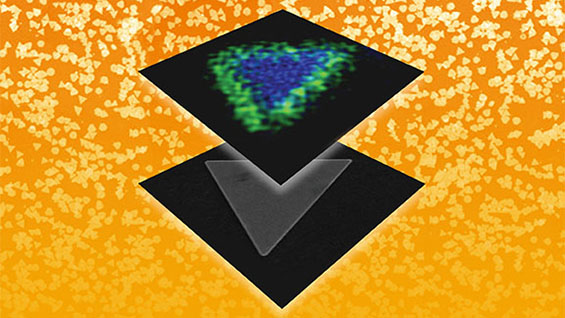Using light to sculpt tiny crystals able to do big jobs has garnered attention in the scientific community since scientists used such a process to create silver prisms in 2001. However, scientists have been unable to apply the process to gold—until now. A recent study describes a strategy that enables synthesis of desirable gold crystals using a chemical called polyvinylpyrrolidone (PVP) in combination with exposure to visible light.
Scientists could use the findings to optimize properties of gold nanocrystals for certain industrial and medical applications.Gold is highly stable and has other attractive features suitable for various industrial and medical applications, but controlling the size and shape of single-crystal nanostructures has been difficult.
In a recent study, a team of researchers from the University of Florida, Department of Energy’s (DOE) Environmental Molecular Sciences Laboratory (EMSL), and Brookhaven National Laboratory (BNL) revealed a photochemical strategy that enables growth of gold nanocrystals with controlled properties. The researchers found they could obtain a high yield of hexagonal or triangular gold nanoprisms by mixing organic polymer polyvinylpyrrolidone (PVP) in an aqueous solution containing gold nanocrystal seeds and tetrachloroauric acid (HAuCl4).

Scientists discover how to create tiny gold crystals (top image shows a close-up image, background image shows multiple crystals) with desirable properties for industrial and medical applications. Image: Courtesy of Pacific Northwest National Laboratory
To understand the underlying mechanisms, the researchers probed the spatial distribution of PVP molecules on individual gold nanoprisms using nanoscale secondary ion mass spectrometry at EMSL, a DOE Office of Science user facility. They also used EMSL’s scanning probe atomic force microscope (AFM) compound microscope as well as the dynamic force AFM.
Surprisingly, the results revealed PVP preferentially adsorbs onto defects along the perimeter of the gold nanocrystals instead of the top and bottom facets as previously suggested. Upon exposure to visible light, the adsorbed PVP directed photo-excited electrons as they reduced aqueous HAuCl4 — ions to add metal to the growing nanocrystal.
This study broadens the applicability of this photochemical strategy beyond synthesis of silver-based nanostructures and reveals novel insights into the molecular mechanisms driving the growth of gold nanocrystals. Scientists could use the findings to tailor the shape and size of gold nanocrystals for specific industrial and medical applications.




